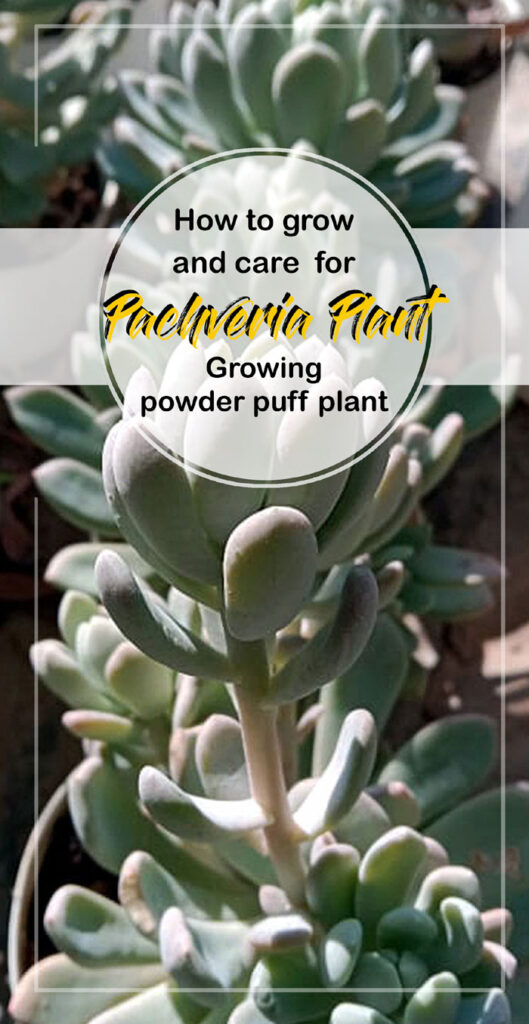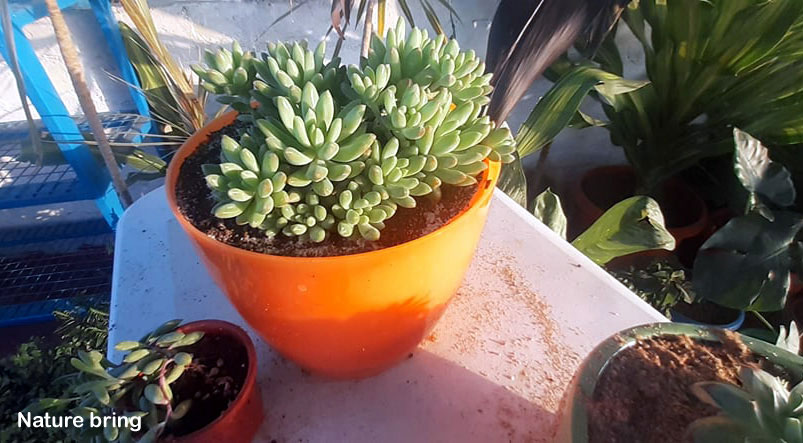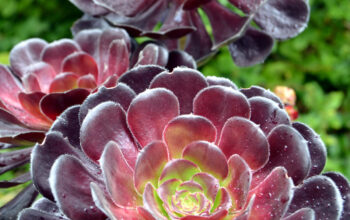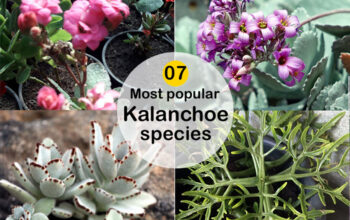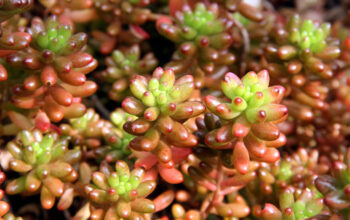Pachyveria Puff Plant (little jewel)
This hybrid of Echeveria Cante and Pachyphytum Oviferum could reach 15 cm (6 inches) in height. Pachyveria Powder Puff plant (also known as jewel plant, little jewel, Pachyveria ‘Exotica’ and Pachyveria ‘Kobayashi’) can reach a height of 15 cm (6 inches). The plant’s most distinguishing features are its fleshy blue-colored leaves. You can expect the plant to bear pink flowers that are yellow on the inside when it finally flowers. After flowering, the succulent forms loose rosettes of fleshy, chubby leave that will not wither.
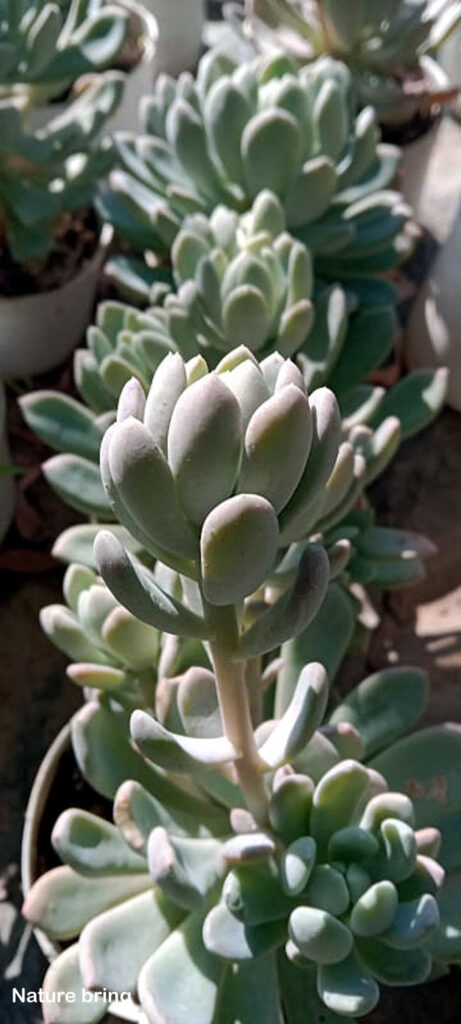
Overview Pachyveria Plant
Scientific name ×Pachyveria ‘Pachyphytoides’
Common name Pachyveria, Little Jewel, Powder Puff, Jewel Plant.
Plant type Succulent Plant
Sun Full sun to partial sun
Soil Well-drained soil
Soil pH 5.0 to 7.0
Zone 9a-11b
How to Grow and Care for Pachveria Powder Puff Plant
The flowers on Pachyveria ‘Powder Puff’ appear from spring through summer, and around that time you can see cute little bell-shaped pinkish-orange flowers on a stem growing from the center of the plant. ‘Powder Puff’ can be grown as a potted plant, in a container garden, or in a hanging basket.
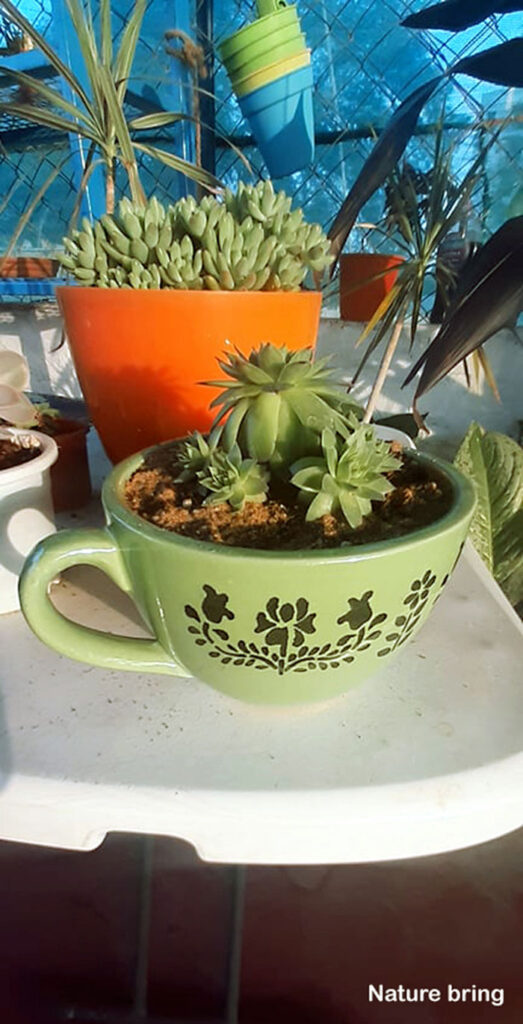
Growing from leaves cuttings
It is imperative that you pick a leaf carefully from the mother plant when propagating this succulent. The leaf should be healthy, with no part of the stem remaining. Make sure the leaf is plump and not dehydrated. Leaves that are uniformly colored without any discoloration, spots, or marks are the best. Gently separate the leaves from the stem. It is important to remove the whole leaf, including the base attached to the stem; otherwise you will fail to propagate your plant. Before replanting, let it become callous for a few days. Once the rosettes grow large enough, it is time to gently remove the original leaf cuttings from the rosettes and repot them in a new container with well-draining soil.
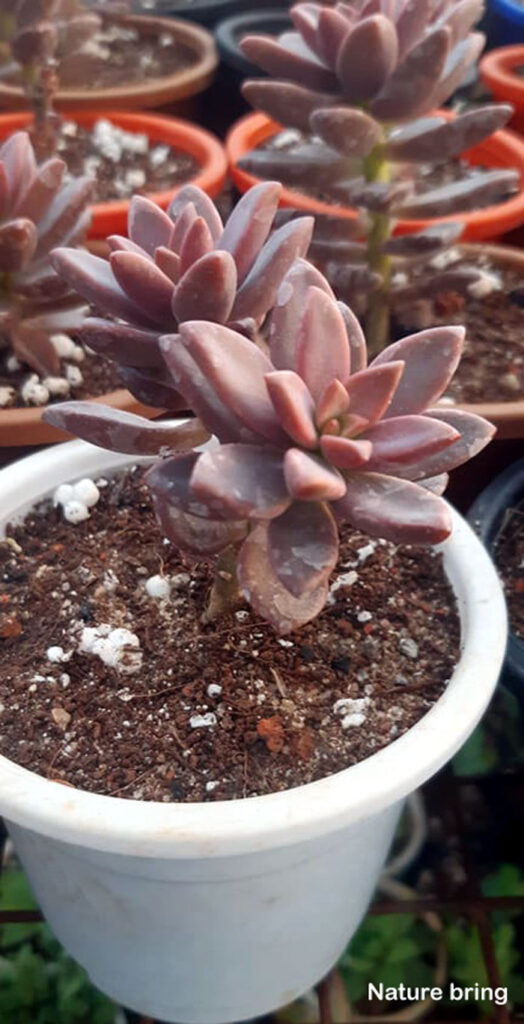
Growing jewel plant from stem cuttings
Cuttings of Pachyveria ‘Powder Puff’ are very easy to propagate. The stems from the mother plant must be healthy and young, so a sharp knife or pair of scissors must be used to cut them. After removing the stem from the plant, allow it to dry for several days before planting it in well-draining soil. When the soil is completely dry, you can water the baby plant again, but do not overwater it.
Sunlight
The best conditions for its growth are full or partial sun. little jewel is better to grow it outdoors rather than indoors. Make sure that you plant them in an area of your garden that gets six hours of direct sunlight each day. For indoor planting, choose a room with plenty of sunlight, preferably near a southern-facing window.
Soil
It is possible for Pachyveria ‘Powder Puff’ plants to tolerate and even thrive in poor soil conditions, provided the soil can drain well. A neutral or slightly acidic friable soil with low nutrients thrives well with this succulent plant.
Watering
Powder puff plants have no special watering requirements. The ability to maintain a water reserve within its leaves is similar to that of all succulents. So the soil should be allowed to dry completely after being fully saturated with water, so one should wait a few days before watering again.
During the winter, you should ensure that this plant has plenty of water and that its well-dried soil is sufficiently moist by pressing your fingers against it. As Pachyveria ‘Powder Puff’ is dormant during the summer, it requires little water during this season of the year. Don’t overwater your plants, as this can result in root rot.
Temperature
Powder Puff needs plenty of light and a temperature of at least 30° F (-1, 1 C°) to grow and survive, since it is not “cold hardy” and will die in freezing temperatures. Pachyveria can tolerate high heat, so if you live in an area where it gets quite hot in the summer, your succulent should do well. The temperature of succulents in an indoor environment is not usually a concern, but it is best to protect them from sudden drafts.
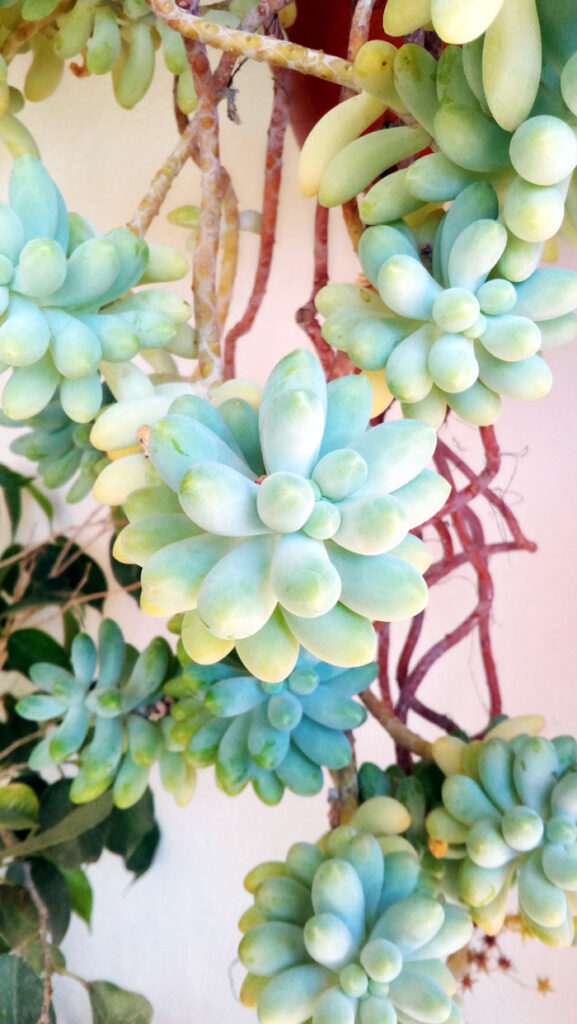
Fertilizer
The plant does not require many fertilizer applications, but giving it some extra nutrients from time to time will help it grow, stay healthy, and stay green. With fertilizer, they will grow faster, stay healthier, and have a more vibrant color. Any balanced fertilizer or a fertilizer suited for succulents will do. Using a fertilizer not specifically for succulents should be diluted a bit more than recommended at the beginning. Follow the package’s instructions for combining fertilizer and water. Ensure that no solution gets on the leaves or stems.
Read also:
5 best indoor succulents types succulents. How to grow Succulent in a container. Growing Basil in containers. How to Grow Potatoes in a container. Growing and care of Petunia plant.
For Pin:
